Introduction
When it comes to manufacturing steel door frames, efficiency and precision are paramount. A steel door frame roll forming machine is a revolutionary piece of equipment that streamlines the production process, ensuring consistent and high-quality results. In this article, we will explore the ins and outs of steel door frame roll forming machines, their benefits, features to consider, operational guidelines, and much more.
What is a Steel Door Frame Roll Forming Machine?
A steel door frame roll forming machine is a specialized equipment designed to automate the manufacturing of steel door frames. It utilizes a roll forming process to transform flat metal sheets into custom-shaped door frame profiles with remarkable precision. This machine consists of multiple stations, each performing a specific task, such as cutting, punching, bending, and roll forming. The result is a ready-to-install steel door frame that meets industry standards and specifications.
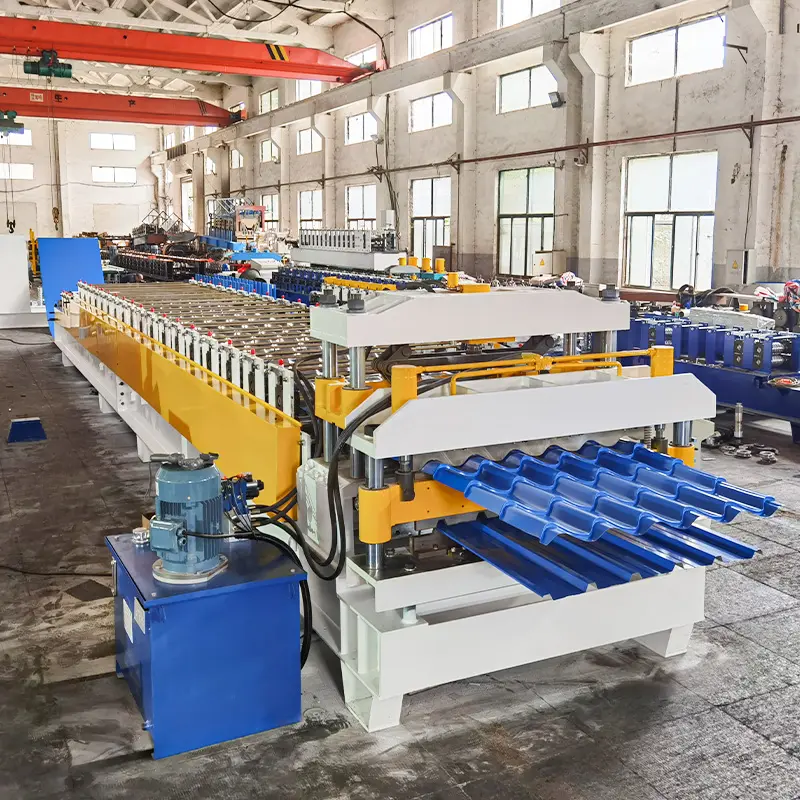
Benefits of Using a Steel Door Frame Roll Forming Machine
Using a steel door frame roll forming machine offers numerous advantages for manufacturers in the construction industry. Here are some key benefits:
- Cost Savings: Roll forming machines optimize material usage, minimizing waste and reducing overall production costs.
- High Efficiency: These machines operate at high speeds, significantly increasing production output and meeting tight deadlines.
- Consistency and Accuracy: Steel door frames produced by roll forming machines exhibit consistent dimensions and high dimensional accuracy.
- Versatility: Roll forming machines can produce various door frame profiles, accommodating different architectural styles and customer requirements.
- Customization: Manufacturers can easily adjust the machine settings to create door frames of different lengths, shapes, and designs.
- Ease of Installation: The precision-engineered steel door frames fit seamlessly, saving time and effort during the installation process.
- Durability: Steel door frames are known for their strength and longevity, providing enhanced security and stability to buildings.
Factors to Consider When Choosing a Steel Door Frame Roll Forming Machine
Selecting the right steel door frame roll forming machine is crucial for ensuring optimal productivity and quality. Here are some factors to consider:
- Production Capacity: Determine the desired production volume and choose a machine that can meet your output requirements.
- Material Thickness and Width: Consider the range of material thicknesses and widths the machine can handle, ensuring it aligns with your project needs.
- Forming Speed: Look for a roll forming machine with adjustable forming speeds to match your production goals.
- Machine Size and Space Requirements: Assess the available workspace and select a machine that fits comfortably within the production facility.
- Automation and Control System: Modern machines offer advanced automation features and user-friendly control systems for efficient operation.
- After-Sales Support: Research the manufacturer’s reputation for customer service and technical support to ensure a smooth experience.

Understanding the Roll Forming Process
The roll forming process is the heart of a steel door frame roll forming machine. It involves feeding a continuous metal strip into the machine, which passes through a series of stations where various operations are performed. These stations include:
- Uncoiler: The machine unwinds the coil of metal and feeds it into the roll forming section.
- Roll Forming Stations: Multiple pairs of rolls shape the metal strip into the desired door frame profile through a series of gradual bending actions.
- Cutting and Punching Stations: The machine can incorporate cutting and punching stations to create openings for hinges, locks, and other hardware.
- Bending Stations: Additional stations may be included to perform bending operations to achieve specific shape requirements.
- Final Cut-off: The finished door frames are cut to the desired length before being discharged from the machine.
Features to Look for in a Steel Door Frame Roll Forming Machine
To ensure a successful investment, it’s essential to consider the following features when selecting a steel door frame roll forming machine:
- Solid Construction: Opt for a machine built with high-quality materials and robust components for long-lasting performance.
- Multiple Stations: Look for a machine that offers sufficient roll forming, cutting, punching, and bending stations to fulfill your production needs.
- Quick Changeover: Machines with easy and rapid tooling change capabilities enable smooth transitions between different door frame profiles.
- Precision and Accuracy: Choose a machine with precise roll forming and cutting mechanisms to achieve consistent dimensions and high-quality results.
- Automation and Control: Advanced automation features and user-friendly control systems enhance productivity and ease of operation.
- Safety Features: Ensure the machine incorporates safety measures to protect operators and prevent accidents during operation.
Types of Steel Door Frame Roll Forming Machines
Steel door frame roll forming machines come in different types based on the specific production requirements and budget considerations. Some common types include:
- Single-Station Machines: These machines have a limited number of roll forming stations and are suitable for low to medium production volumes.
- Multi-Station Machines: With multiple roll forming stations, these machines offer increased production capacity and versatility.
- Fully Automated Machines: These advanced machines incorporate high levels of automation, including material feeding, roll forming, cutting, and stacking.
- Customizable Machines: Manufacturers can customize machines to accommodate unique door frame profiles and customer-specific requirements.
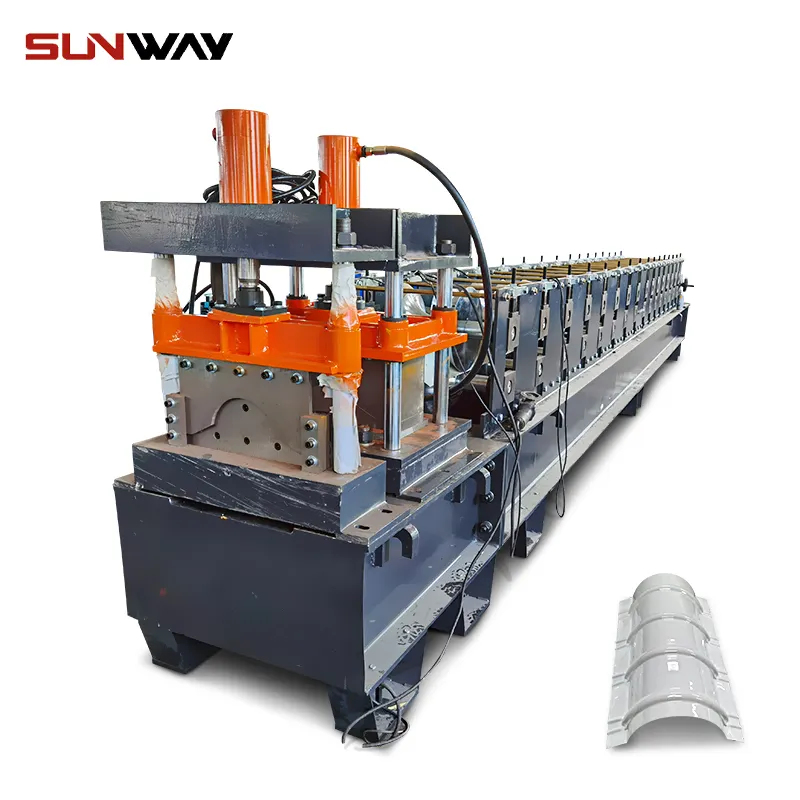
How to Operate a Steel Door Frame Roll Forming Machine
Operating a steel door frame roll forming machine requires adherence to specific guidelines. Here is a step-by-step overview of the process:
- Preparation: Ensure the machine is properly set up, including installing the required tooling and adjusting the machine settings for the desired door frame profile.
- Material Loading: Load the coil of metal onto the uncoiler and thread the metal strip through the roll forming section, ensuring smooth feeding.
- Machine Start-up: Activate the machine’s power and control system, following the manufacturer’s instructions.
- Production Run: Monitor the machine during operation, checking for any abnormalities or issues. Make adjustments as necessary to maintain optimal production quality and speed.
- Quality Control: Periodically inspect the produced door frames for dimensional accuracy and surface quality, making adjustments if needed.
- Cut-off and Stacking: Once the desired length of door frame is reached, the machine automatically cuts off the profile and transfers it to the stacking system or collection area.
- Shutdown: Safely power down the machine, following the recommended procedures.
Maintenance and Care for a Steel Door Frame Roll Forming Machine
Regular maintenance and care are essential to keep a steel door frame roll forming machine in optimal working condition and extend its lifespan. Here are some key maintenance practices:
- Cleaning: Regularly clean the machine to remove debris, dust, and metal shavings. Use appropriate cleaning tools and avoid abrasive materials that may damage the surface.
- Lubrication: Apply lubricants to moving parts, such as gears, chains, and bearings, as recommended by the manufacturer. Lubrication helps reduce friction and prevents premature wear.
- Inspection: Conduct routine inspections to identify any signs of wear, loose bolts, or damaged components. Promptly replace or repair any faulty parts to prevent further damage.
- Alignment and Calibration: Check the alignment of the rolls and other key components. If necessary, adjust or realign them to ensure accurate and consistent forming results.
- Electrical and Control System Maintenance: Regularly inspect the electrical connections, control panels, and sensors for any issues. Clean and tighten connections, and replace faulty components as needed.
- Safety Checks: Ensure that safety features, such as emergency stop buttons and safety guards, are in proper working order. Test them regularly to maintain a safe working environment.
- Operator Training: Provide thorough training to machine operators on proper operation, maintenance, and safety procedures. Well-trained operators can identify potential issues and perform routine maintenance tasks effectively.
By following these maintenance practices, you can enhance the longevity of your steel door frame roll forming machine and minimize downtime due to unexpected breakdowns.
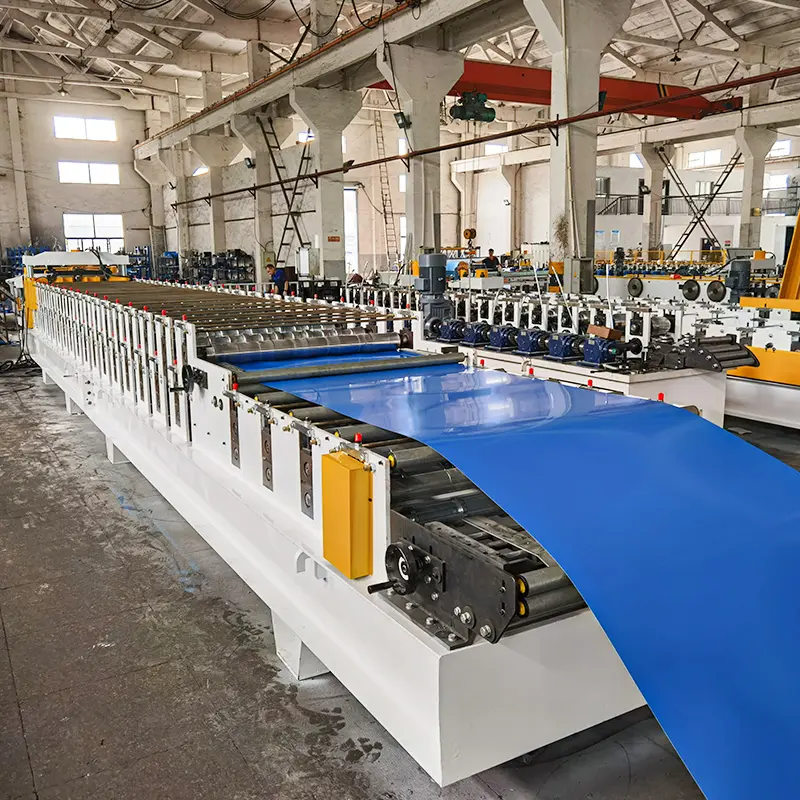
Common Issues and Troubleshooting Tips
Despite regular maintenance, occasional issues may arise with a steel door frame roll forming machine. Here are some common problems and troubleshooting tips:
- Material Jamming: If the metal strip gets stuck or jammed during feeding, stop the machine immediately and clear the obstruction. Check for misaligned rollers or incorrect tension settings.
- Inconsistent Forming Results: If the produced door frames exhibit dimensional variations, ensure that the roll forming stations are properly aligned and that the material feed is smooth and consistent.
- Cutting or Punching Issues: If the cutting or punching stations are not functioning correctly, inspect the cutting blades or punches for damage or wear. Replace them if necessary and adjust the settings for proper alignment.
- Machine Vibrations or Noises: Excessive vibrations or unusual noises may indicate loose components or worn-out bearings. Inspect the machine for loose bolts, tighten them as needed, and replace worn-out bearings.
- Electrical or Control Malfunctions: If the machine’s electrical or control system malfunctions, check the wiring connections and sensors for loose or damaged parts. Consult a qualified technician if needed.
Remember to consult the machine’s user manual and reach out to the manufacturer or technical support team for specific troubleshooting guidance and assistance.
Safety Precautions When Using a Steel Door Frame Roll Forming Machine
Ensuring the safety of operators and personnel is paramount when operating a steel door frame roll forming machine. Here are some important safety precautions to follow:
- Proper Training: Provide comprehensive training to operators on machine operation, safety procedures, and emergency protocols. Emphasize the importance of wearing appropriate personal protective equipment (PPE).
- Machine Guarding: Install safety guards and barriers to prevent accidental contact with moving parts or exposure to the roll forming section. Ensure guards are in place and functional at all times.
- Emergency Stop: Clearly mark and educate operators about the location and function of the emergency stop button. Test the emergency stop function regularly to ensure its effectiveness.
- Lockout/Tagout: Implement lockout/tagout procedures to prevent accidental machine start-up during maintenance or repair activities. Follow proper isolation and verification protocols.
- Fire Safety: Keep the machine and surrounding area free from flammable materials. Install fire suppression systems and have fire extinguishers readily available.
- Safe Material Handling: Train operators on safe handling and feeding of metal coils to prevent injuries. Use lifting equipment or techniques to avoid strain or accidents.
- Housekeeping: Maintain a clean and organized workspace, removing debris and obstructions that may pose tripping hazards or interfere with machine operation.
- Regular Inspections: Conduct periodic inspections of the machine, electrical connections, and safety features to identify potential hazards or issues. Address them promptly to ensure a safe working environment.
Following these safety precautions will help prevent accidents, injuries, and property damage associated with the operation of a steel door frame roll forming machine.
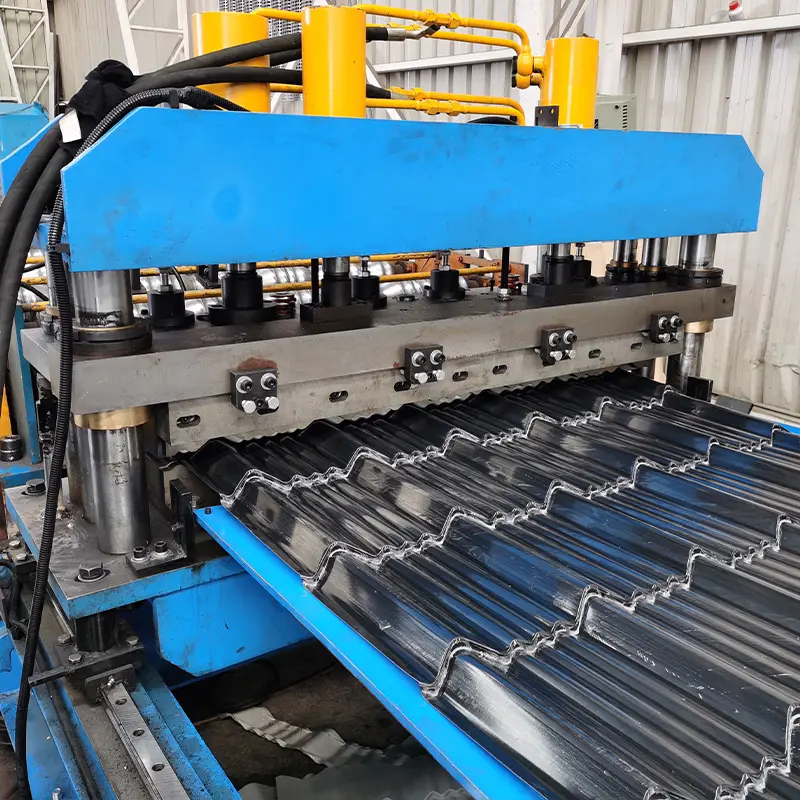
Applications of Steel Door Frame Roll Forming Machines
Steel door frame roll forming machines find applications in various sectors of the construction industry. Some common applications include:
- Residential Buildings: Steel door frames are widely used in residential constructions, providing sturdy and durable support for doors in houses and apartments.
- Commercial Buildings: Steel door frames are favored in commercial buildings, such as offices, shopping malls, and hotels, for their security, fire resistance, and longevity.
- Industrial Facilities: Steel door frames are essential in industrial facilities, where robust and reliable door frames are required for safety and security reasons.
- Institutional Buildings: Schools, hospitals, government buildings, and other institutional structures often utilize steel door frames due to their strength and resistance to wear and tear.
Cost Considerations and Return on Investment
Investing in a steel door frame roll forming machine requires careful cost analysis and consideration. Factors influencing the cost include machine specifications, automation level, manufacturer reputation, and after-sales support. It is crucial to balance the initial investment with the long-term benefits and return on investment (ROI).
When evaluating the ROI, consider factors such as increased production capacity, reduced labor costs, improved product quality, and overall efficiency gains. A well-maintained machine can provide a significant ROI over its operational lifespan.
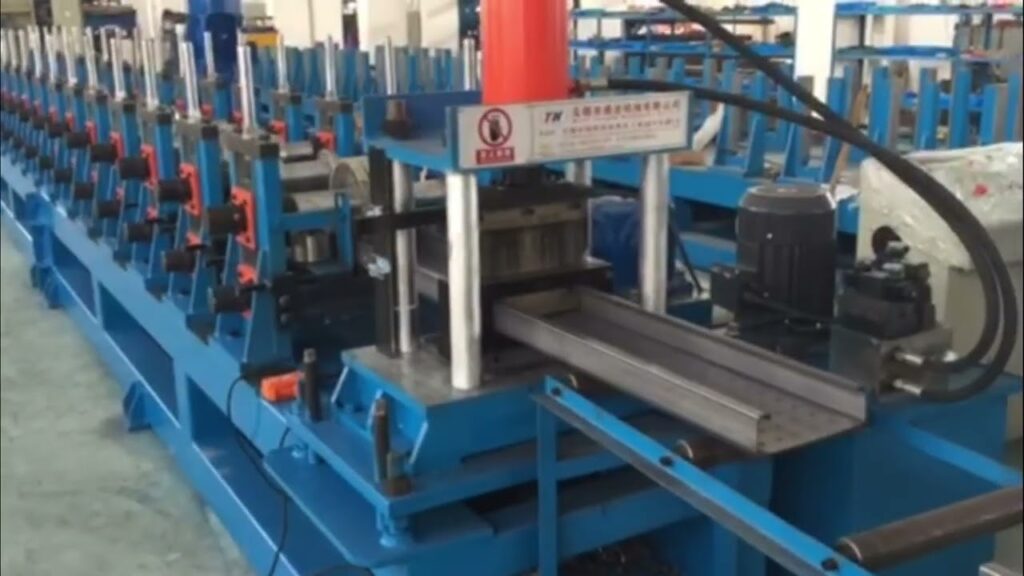
Conclusion
A steel door frame roll forming machine is a game-changer in the manufacturing of steel door frames. It offers efficiency, precision, and customization options that traditional methods cannot match. By understanding the benefits, features, operation, and maintenance of these machines, manufacturers can make informed decisions and harness their full potential. Investing in a high-quality steel door frame roll forming machine can pave the way for increased productivity, improved product quality, and long-term success in the construction industry.
FAQs
Q1: Can a steel door frame roll forming machine produce door frames of different sizes?
Yes, a steel door frame roll forming machine can be adjusted to produce door frames of various sizes. The machine settings can be customized to accommodate different dimensions, allowing for flexibility in production.
Q2: How long does it take to set up a steel door frame roll forming machine for a new door frame profile?
The setup time for a new door frame profile can vary depending on the complexity of the design and the operator’s experience. With modern machines, quick changeover features allow for faster adjustments, reducing setup times to a matter of minutes or hours.
Q3: Are steel door frames more expensive than other materials?
Steel door frames may have a higher upfront cost compared to other materials like wood or aluminum. However, steel door frames offer long-term cost savings due to their durability, low maintenance requirements, and resistance to wear and tear. They provide enhanced security and are less susceptible to warping, rotting, or termite damage. Additionally, steel door frames can contribute to energy efficiency and fire resistance, making them a worthwhile investment in the long run.
Q4: Are steel door frames compatible with different door types?
Yes, steel door frames are compatible with various door types, including solid wood doors, hollow metal doors, and glass doors. The flexibility of steel door frames allows for easy installation and integration with different door materials and styles.
Q5: Can a steel door frame roll forming machine handle different types of steel materials?
Yes, most steel door frame roll forming machines can process different types of steel materials, including galvanized steel, stainless steel, and cold-rolled steel. The machine’s specifications and tooling can be adjusted to accommodate the specific properties and thicknesses of different steel materials.
